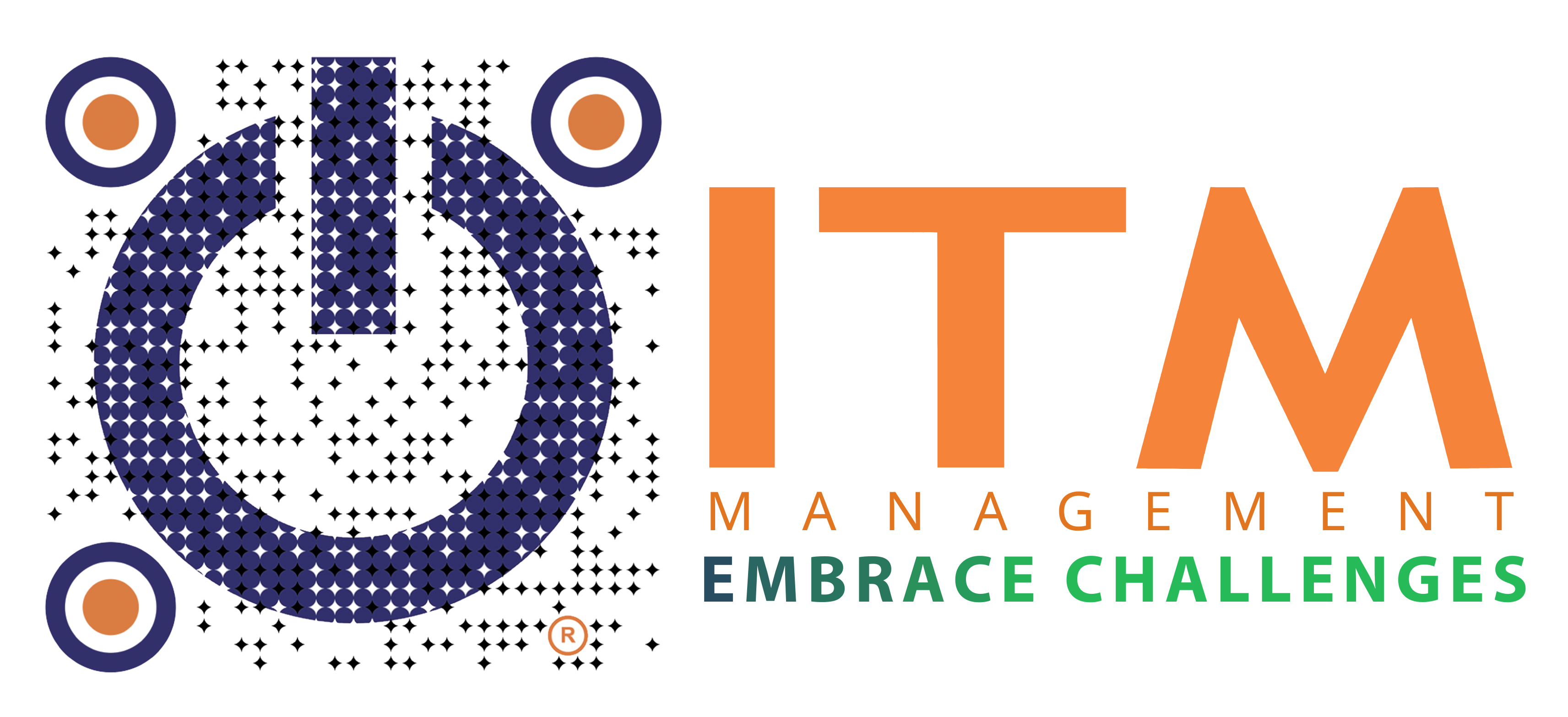The greatest risk to your business may not be hackers themselves, but the cybersecurity myths you still believe.”
In today’s rapidly changing digital environment, cybercriminals no longer depend on outdated methods. Powered by AI, phishing scams, ransomware, and zero-day exploits have grown increasingly sophisticated and destructive. Despite this, many organizations maintain a false sense of safety.
Why This Myth Is a Problem
Many organizations continue to believe in outdated assumptions about cybersecurity. These misconceptions don’t just create a false sense of security they open critical gaps that attackers can easily exploit. When businesses underestimate the sophistication of modern threats, they fail to invest in the right defenses and expose themselves to unnecessary risks.
Myth 1: Our IT person handles the company’s security
Relying on a single IT staff member or even a small team creates serious blind spots. Cyberattacks today are designed to bypass basic defenses, exploit human behavior, and move quickly across systems. These are some of the most pressing threats that demand a broader, layered approach beyond traditional IT responsibilities:
Spear phishing uses highly personalized emails that appear to come from trusted sources like colleagues or clients to trick employees into clicking malicious links or revealing credentials. Unlike mass spam, these attacks exploit human trust, often bypassing antivirus and spam filters.
Ransomware encrypts files and systems, demanding cryptocurrency payments for their release. It can disrupt operations for weeks, causing significant financial and reputational damage. Firewalls and antivirus alone are insufficient; preventing ransomware requires restricting admin rights, maintaining tested backups, and enforcing safe download policies.
Zero-day attacks target unknown vulnerabilities in software or hardware before patches are available. Even proactive IT teams cannot prevent these, as the flaws are undocumented. Continuous monitoring, monitoring unusual activity and advanced tools like Endpoint Detection and Response (EDR) are essential to detect and limit their impact.
BEC involves attackers impersonating executives or vendors to deceive employees into transferring funds or sharing sensitive data. These attacks rely on social engineering and appear legitimate, often evading technical defenses. Mitigation requires identity verification, multi-factor authentication, and strict financial process controls.
Myth2 : “My company is too small to attract hackers”
Many believe cybercriminals only target large enterprises with millions in revenue. In reality, small and medium-sized businesses (SMBs) are prime targets due to their weaker defenses, limited budgets, and lack of dedicated security teams. Hackers exploit outdated systems and minimal security policies, making SMBs easy entry points for attacks like data theft or ransomware.
Even small businesses hold customer records, payment information, employee data, and operational insights all of which can be monetized or used in larger attacks.
SMBs often lack the budget or resources to implement enterprise-grade security solutions. This makes them easier to breach with minimal effort.
Many small businesses rely on a single IT person or outsource basic support, leaving gaps in monitoring, patching, and incident response.
Legacy software, unpatched vulnerabilities, and unsupported operating systems are common in SMB environments and easy for attackers to exploit.
Without formal cybersecurity policies, or not well training cybersecurity awareness, employees may use weak passwords, fall for phishing emails, or unknowingly expose sensitive data.
Real-World Impact
-
- According to the 2025 Verizon DBIR, ransomware affected 44% of breaches, with SMBs being disproportionately impacted.
- Many attacks are automated and opportunistic, scanning the internet for vulnerable systems not targeting specific companies by size.
Myth 3 : “MSPs Are Too Expensive”
Many small and medium-sized businesses (SMBs) assume that Managed Service Providers (MSPs) are only for large enterprises with big budgets. This belief often leads to underinvestment in cybersecurity, leaving businesses exposed to preventable threats. In reality, the cost of a single breach often far exceeds the investment in preventive measures. Alongside this misconception, many also believe that antivirus protection is enough. However, antivirus software is often viewed as a complete solution, when in fact it only detects a limited range of modern threats. Sophisticated attacks such as phishing, social engineering, and zero-day exploits can easily bypass signature-based detection by targeting human behavior or exploiting unknown vulnerabilities. Relying solely on antivirus software leaves networks and data vulnerable to breaches it cannot prevent.
- The majority of cyber incidents stem from basic oversights:
- Weak or reused passwords
- Missed software updates
- Employees clicking on phishing links
- These issues don’t require expensive tools they require proactive support, training, and monitoring.
- A single cyberattack can result in:
- Downtime that halts operations
- Fines for data protection violations
- Reputational damage that affects customer trust
- These costs often exceed the annual investment in an MSP by many times.
Managed Service Providers (MSPs) are not just tech vendors they’re business partners. The best MSPs: Understand your business, Respond fast Communicate clearly, Fix problems properly and Treat your team with respect. MSPs power businesses with expert IT support without the overhead of hiring full-time staff.
Business Benefits:
-
- Predictable Costs: Flat-rate pricing helps avoid surprise IT expenses.
- Scalable Support: Tiered service packages grow with your business.
- Tailored Solutions: Flexible plans customized to your size, industry, and needs.
Human-Centered Service:
-
- Friendly, patient, and respectful technicians.
- Clear communication no overwhelming technical jargon.
- Customers are always kept informed and supported.
Strategic IT Guidance:
-
- Plan technology investments with confidence.
- Forecast IT budgets accurately.
- Manage vendor relationships effectively.
- Stay compliant with industry regulations.
Robust Cybersecurity & Data Protection:
-
- 24/7 monitoring and threat response even for risks you can’t see.
- Fast, reliable issue resolution done right the first time.
- Automated, off-site backups and rapid recovery options.
- Protection against data loss from hardware failure, human error, or cyberattacks.
Such thinking is dangerous because it shifts the weight of protecting the entire organization onto a single individual. No matter how capable that person may be, one employee cannot defend against the full range of modern cyber threats. The reality is clear: strong cybersecurity requires multiple layers of defense, company-wide awareness, and shared responsibility not reliance on a single point of control.
How to Bust the Myth: Practical Steps for Better Security
Cybersecurity isn’t just about avoiding mistakes it’s about building a proactive, layered defense that goes beyond relying on a single IT person. Here are practical, cost-effective steps you can take right away to reduce risk:
-
- Enable Multi-Factor Authentication (MFA): Add an extra layer of security to account logins. Even if a password is stolen, MFA (such as a phone code or authenticator app) can block unauthorized access.
- Regular Updates and Patching: Keep operating systems, applications, and devices up to date. Patching known vulnerabilities quickly reduces the window attackers have to exploit weaknesses.
- Cybersecurity Awareness Training: Teach employees how to spot threats like phishing, suspicious links, or business email compromise (BEC). Encourage a no-blame culture for reporting suspicious activity to ensure faster responses.
- Conduct Regular Backups: Follow the 3-2-1 rule: keep three copies of data, on two different types of media, with one stored off-site or in the cloud. Test backups regularly to make sure they work during real incidents such as ransomware attacks.
- Implement Network Segmentation: Separate critical systems and sensitive data from less secure parts of your network. This limits how far attackers can move if they gain entry, reducing the overall impact.
Conclusion: Don’t Let Myths Define Your Security
Cybersecurity is no longer a task that a single IT person or a single tool can manage. As threats become more sophisticated, relying on outdated assumptions leaves your business vulnerable to costly disruptions and lasting damage.
Every organization, no matter its size, holds information worth protecting. Building resilience doesn’t require complex or expensive systems it calls for layered defenses, continuous awareness, and a culture of shared responsibility.
This is where ITM can make a difference. We deliver comprehensive services that cover every aspect of protection: from security assessments and employee training, to advanced defense technologies and our One-Click Recovery solution. With ITM, you gain a partner dedicated to keeping your data secure, your systems available, and your business running without interruption.
Contact ITM today to discover a cybersecurity strategy that fits your needs and gives you the confidence to grow in a world full of digital risks.








